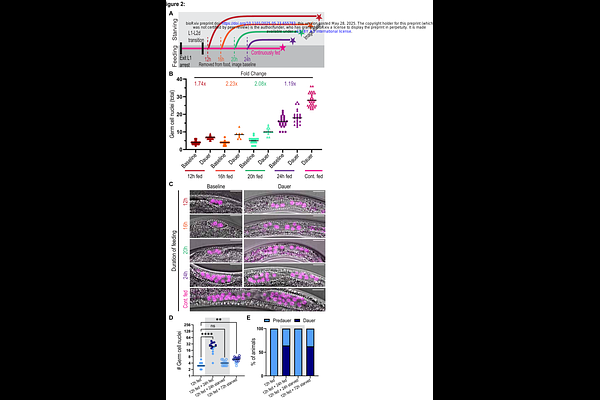Pre-dauer starvation decouples somatic from germline development with lifelong reproductive consequences in C. elegans

Pre-dauer starvation decouples somatic from germline development with lifelong reproductive consequences in C. elegans
Koitz, F. A.; Miller, C. P.; Gordon, K. L.
AbstractEarly life stresses impact reproductive outcomes in many organisms. In response to crowding and starvation, C. elegans nematodes form dauer larvae, in which development arrests until conditions improve. We discovered dramatic differences in gonad size and germ cell number among dauers that form under different conditions. We used live cell imaging of fluorescent markers in otherwise wild-type and mutant animals combined with food-removal, recovery, and brood-size assays to investigate the causes and consequences of this germline difference. Pre-dauer feeding, but not nutrient sensing via the DAF-2/insulin-like signaling receptor or DAF-7/TGF-{beta}, is required for plasticity in gonad size. Gonad differences in dauer have lifelong reproductive consequences; worms with small dauer gonads recover to have smaller broods. Somatic and germline development are decoupled as pre-dauer starvation induces germline quiescence while the soma continues its development until dauer is formed. A rapid return to germline Notch-dependence and an increase in presentation by the germline stem cell niche of the Notch ligand LAG-2--regulated at the protein and not transcript level--are among the earliest events of dauer recovery.